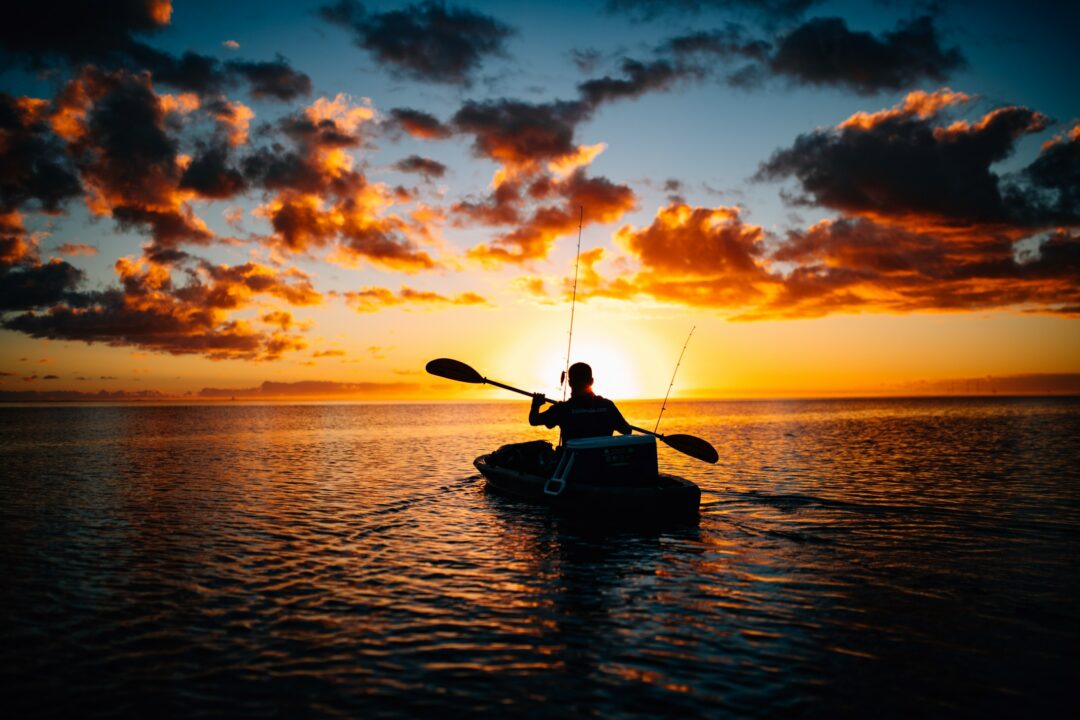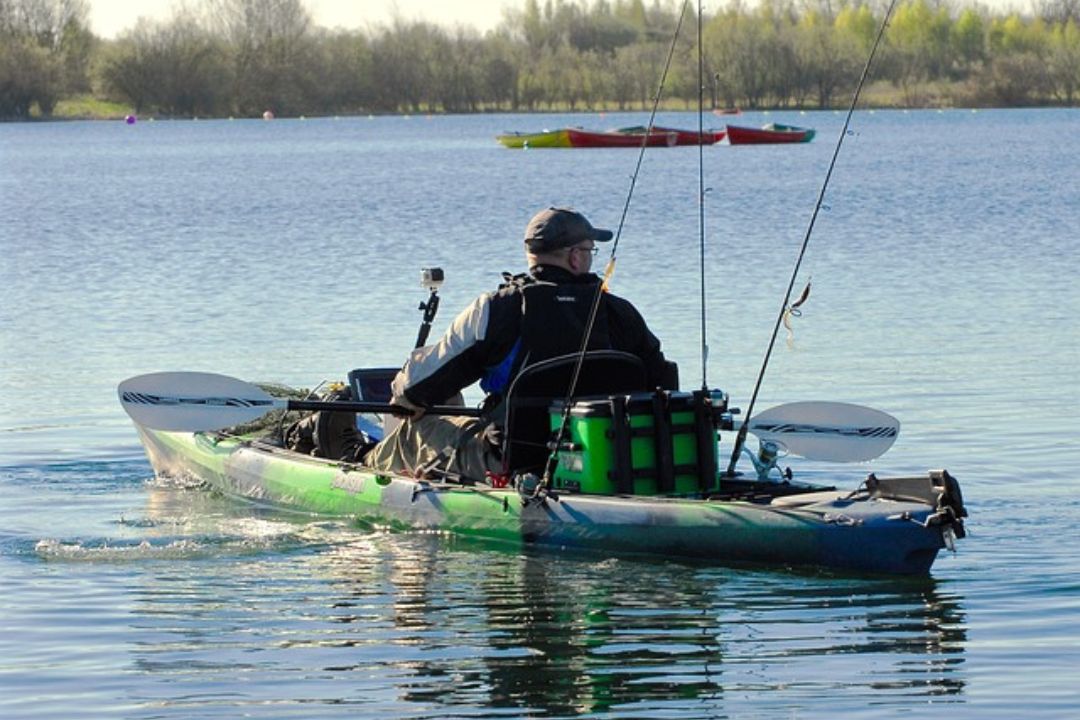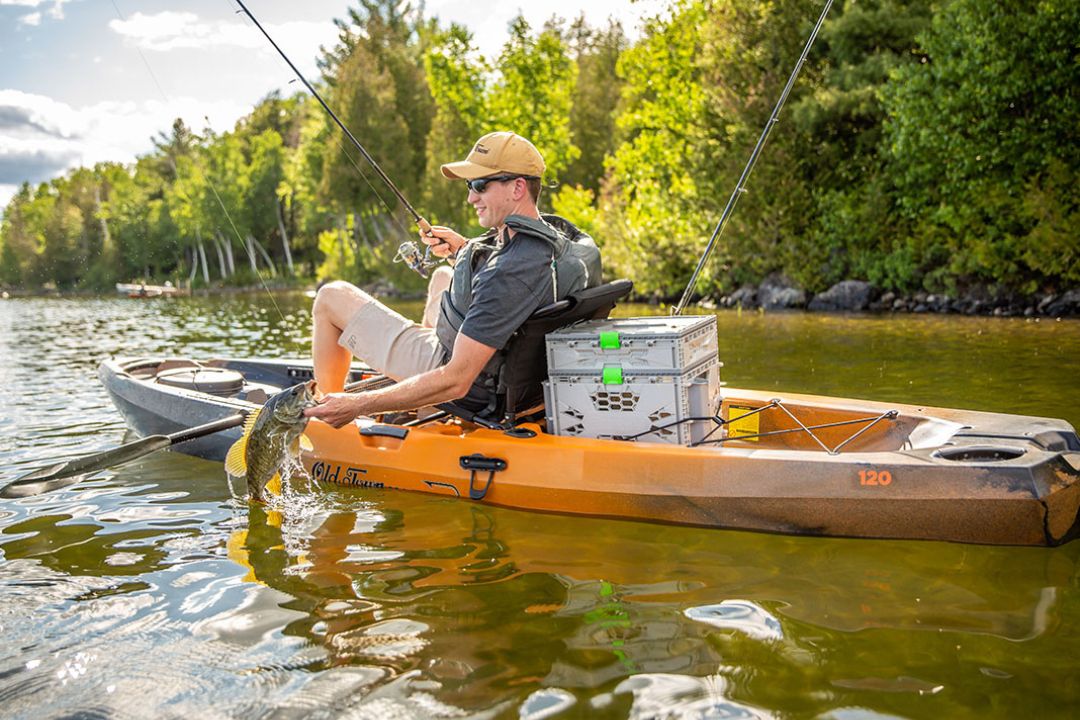The Best Gear for Walleye Fishing, as Recommended by an Expert
Fishing | August 20, 2025
SAIL
May 12, 2023

Using a kayak’s unique characteristics to your advantage is one of the best things you can do as an angler to catch more fish. This means thinking about the locations you can reach with a kayak, which may not be accessible to anglers in larger boats, and choosing the most effective presentations for kayak fishing.
At the same time, recognizing a fishing kayak’s limitations is also important. For example, a kayak angler can’t move around as fast as someone in a bass boat. This is a bit of an apples-to-oranges comparison, of course, but it illustrates other factors for kayak anglers to consider when deciding where to launch, what areas to fish and what techniques to use.
Keeping these concepts in mind, let’s look at some specific examples of how to leverage a fishing kayak’s strengths to maximize your angling success.
In this article, you will learn more about the benefits and specifics of kayak fishing:
Being able to launch a kayak from shore easily and, in turn, fishing waterbodies inaccessible to power boats is a significant perk of kayak anglers. Getting away from areas with heavy angling pressure and boat traffic is a good thing. One benefit of avoiding crowds is there is less competition among anglers, which means more spots you can have to yourself.
Fishing remote or smaller waterbodies without boat ramps suitable for larger boats can also put you on fish that are more willing to bite. This doesn’t guarantee hook sets, though, as there will still be cold fronts and other challenges to overcome. But, getting on less pressured waterbodies goes a long way towards helping catch more fish over the course of the season.

Paddling a kayak is quiet. Likewise when moving around in a pedal fishing kayak, like a Pelican Catch 130 Hydryve or Old Town Sporstman Bigwater PDL.
Stealth is a major advantage for the kayak angler. More often than not, the stealthier you can be on the lake, the more fish you’re going to catch.
This is certainly true when fishing shallow. Trout, smallmouth and largemouth bass, walleye and panfish, to name just a few species, are wary of noises and overhead movements in water less than 12 feet, or deeper clear water.
Staying quiet is also important when fish are positioned high in the water column over deep water. A classic example is how smallmouth bass and walleye feeding on suspending baitfish can get skittish around boat noise.
Although a kayak’s design is advantageous, it’s still important not to make unnecessary noises, like dropping a tackle tray or banging a paddle against the side of the cockpit. Fortunately, there are plenty of kayak fishing accessories available for rigging your boat to ensure fishing gear stays organized and secure, so it won’t move around and make a racket.
Tip: While you don’t want to be detected by fish, it’s critical you’re visible to other boaters on the water. Wear a brightly coloured PFD and clothing. Rigging your kayak with a visibility flag is also a good idea.
Along with stealth, a shallow draft makes a kayak the perfect vessel for fishing skinny water.
This makes a fishing kayak great for catching northern pike, trout, crappie and yellow perch from shorelines and shallow flats in the spring, and big largemouth and smallmouth bass, musky and bluegills in the summer.
Being seated in a fishing kayak puts you low to the water. This is a good place to be when you want to cast or skip a lure, such as a wacky rigged stickbait, for largemouth bass hiding under a fallen tree or dock along a shoreline.

Given the stability and angling functionality of modern fishing kayaks, a wide range of techniques and baits can be used to catch fish. Here are just a few tactics to consider.
Trolling is a great way to cover water in any boat, and a kayak is no exception. Even if you prefer casting, trolling a lure when moving from one spot to another is an easy way to increase the number of fish you catch, regardless of the species you’re targeting.
Diving crankbaits and shallow-running jerkbaits are great trolling lures for walleye, bass and pike. Spoons shine for pike and trout. If hoping to catch brook or rainbow trout in spring, you’ll definitely want to troll a Lake Clear Wabbler Spoon with a dropper line attached to a wet fly, like a woolly bugger.
Tip: Most fishing kayaks come pre-rigged with rod holders, but plenty of kayak fishing accessories are available for customizing rod storage to best suit your needs.
Like casting from any other type of fishing boat, kayak anglers are wise to carry different baits and experiment with various tactics to learn what fish prefer. This means having lures you can work fast to cover water and trigger reaction strikes from predatory fish. Spinnerbaits, crankbaits, jerkbaits, spoons and swimbaits are good options for this tactic.
It’s also important to have options for fishing slower when you need to dissect a spot or finesse bites. A plastic on a jig and a drop-shot rig are two options.
Alternating between presentations is a good strategy most days. For example, in spring, an angler can use a Rapala CountDown Elite to cast a rocky shoreline for brook trout, walleye or crappie, depending on the lake. Then, after catching a few fish from a specific spot, changing to a jig and Berkley PowerBait or Gulp! Minnow might help catch some less active fish from the same area.
A similar approach can be applied to largemouth, smallmouth and walleye. Here, a kayak angler might first locate active fish casting a Rapala RipStop, Berkley Flicker Shad or Keitech swimbait on a jig. If the action subsides, switching to a finesse presentation and reworking the area is likely to produce additional fish. Finesse options for this scenario include the Z-Man TRD on a Finesse ShroomZ Jig (i.e., Ned rig), or drop-shotting a Berkley MaxScent Flatnose Minnow, Set The Hook Flat Sided Shad or X-Zone Slammer.